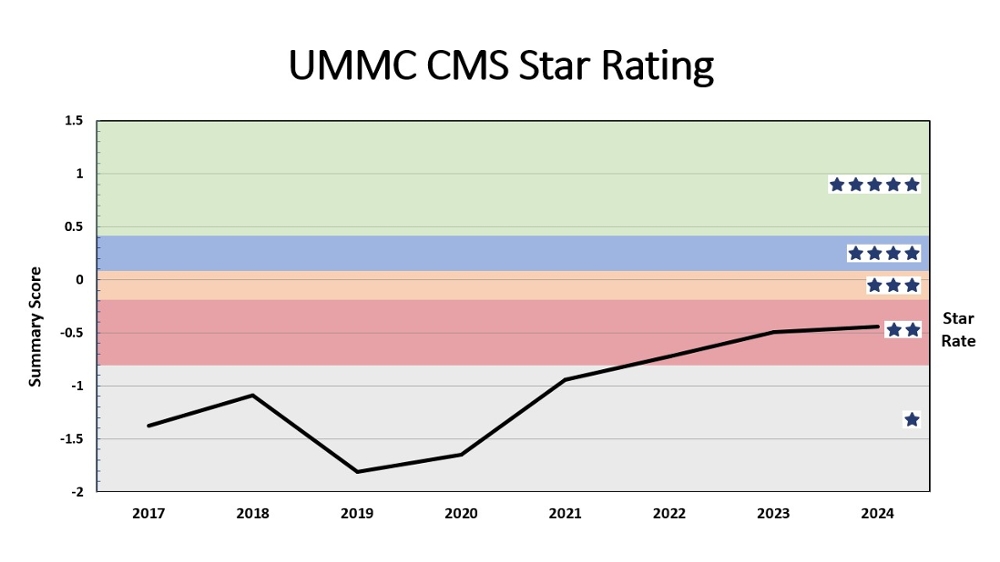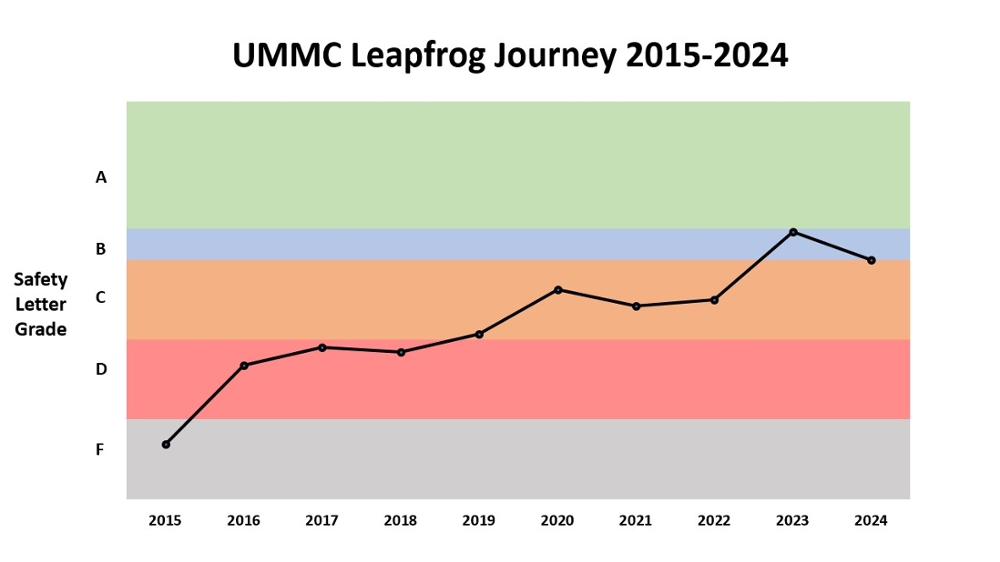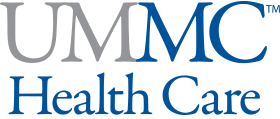
Clinical Quality
Public Reporting
The public reporting of patient safety, outcomes, and experience is important for hospitals with respect to reputation and pay for performance metrics. The data used for public reported benchmarks is different from the data used internally by hospitals for performance improvement. Internal improvement data needs to be simple, timely, and actionable in order to represent current performance. Publicly reported data must be reported by all hospitals in a standard format to allow hospital comparisons, a process that takes time and makes the data one to three years old by the time it is publically available. The Center for Medicare and Medicaid (CMS) Star Rating and the Leapfrog Safety Grade are two of the most commonly used publicly reported metrics for national quality & outcome comparisons among hospitals and healthcare systems. Our publicly reported metrics, coupled with our internal data, help identify opportunities to improve patient outcomes, safety, and experience.
The Center for Medicare and Medicaid Services (CMS) reports Star Ratings for all hospital annually based on performance on 57 reported metrics. The measures cover patient outcomes and experience, processes and efficiency in healthcare. Safety Net Hospitals like UMMC, who provide care to the underprivileged and sickest patients, almost all perform in the one or two star ranges. UMMC’s quality program has focused on eliminating patient harm, improving outcomes and enhancing the healthcare experience for patients and families. The improving trend in the past two years encourage us to achieve two and then three stars rank.




